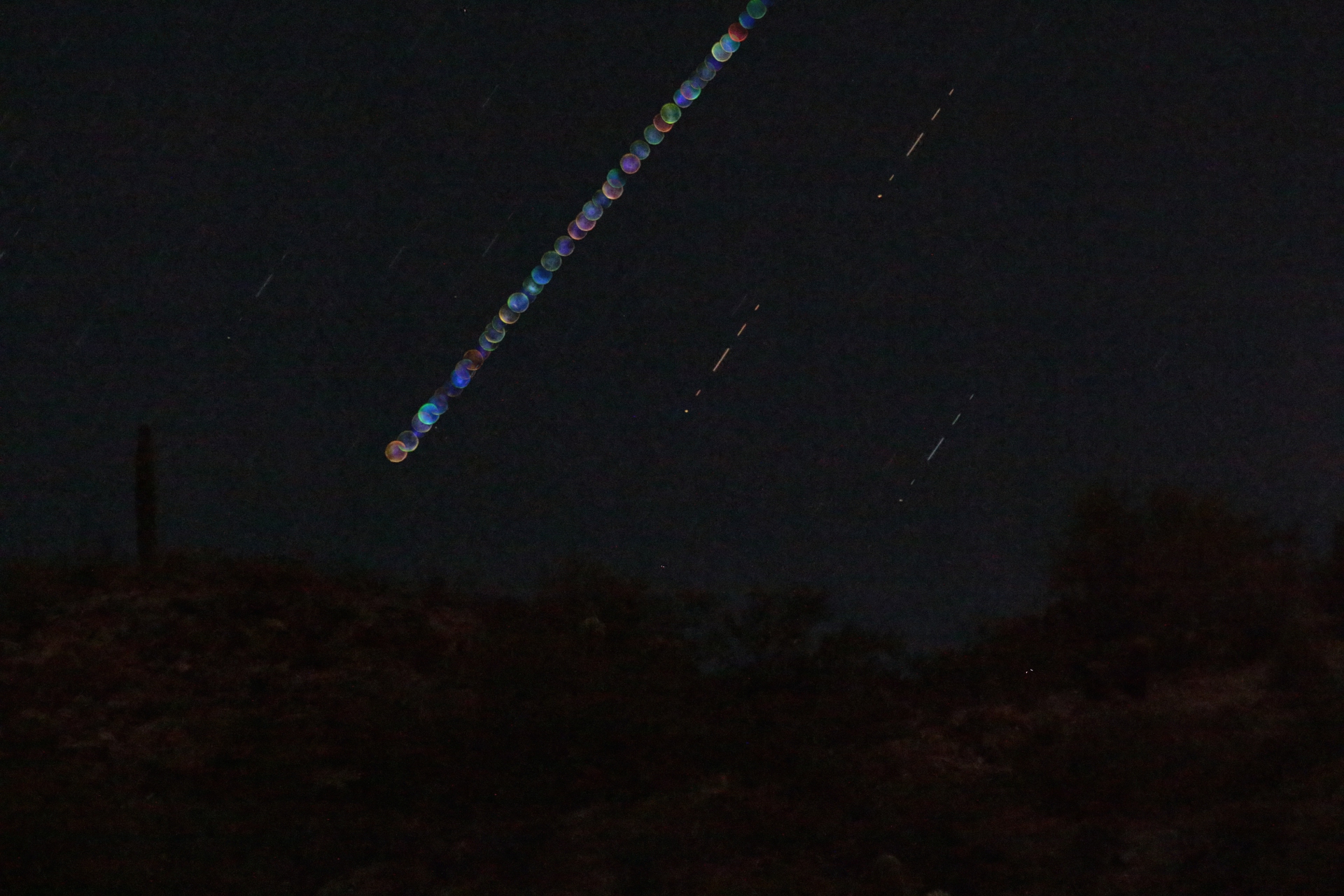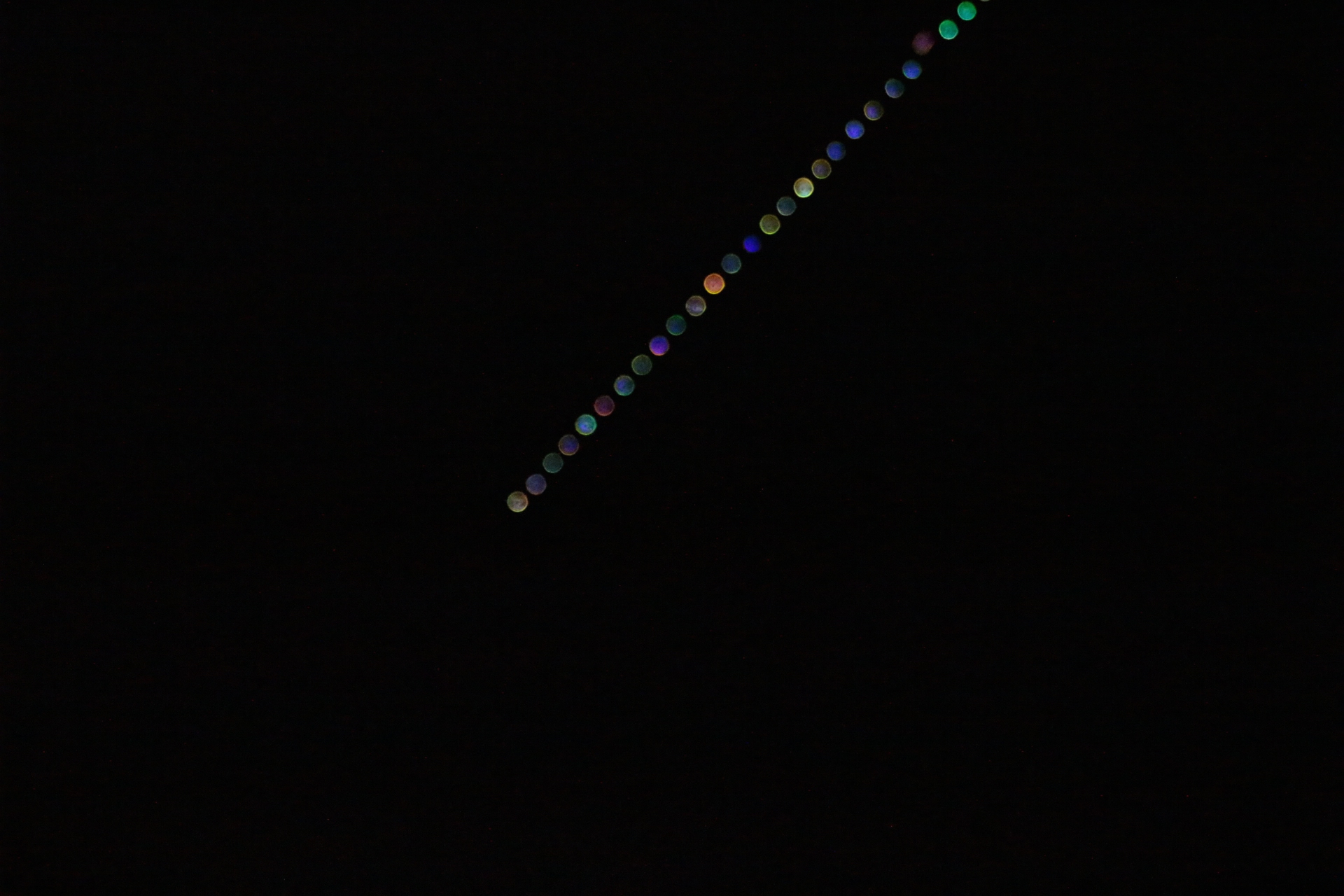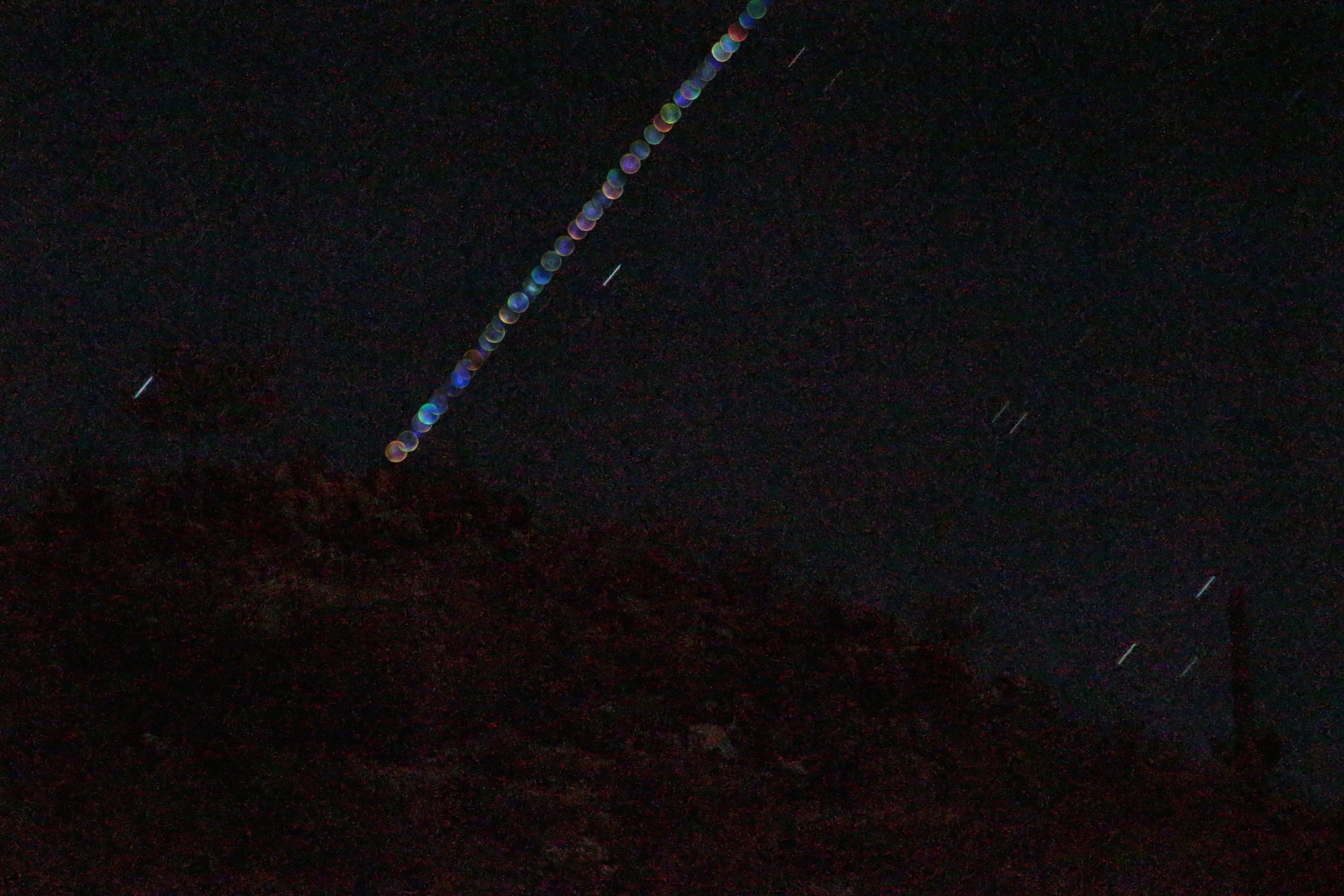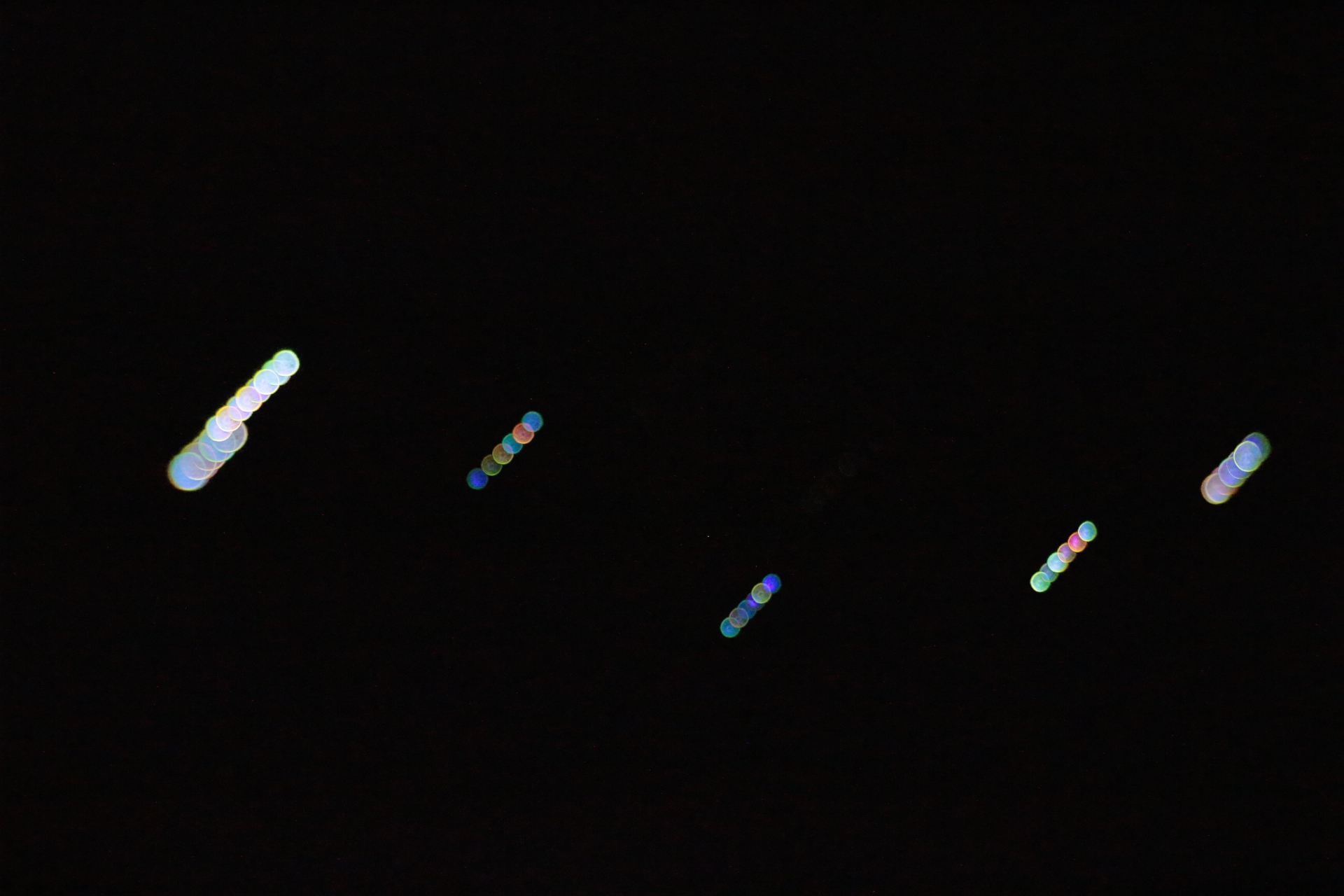Twinkle (Scintillation) of Starlight, Technique 2

This photograph, and all those that follow in this section, were taken with my tripod-mounted Canon T4i digital camera shooting the star Sirius with a 200 mm telephoto lens at an ISO setting of 12,800. The location is my back yard at a series of dates when Sirius was rising in the east over the foothill behind my house and the gibbous moon was in the western sky and was slightly illuminating the foothill. Sirius was purposely made slightly out-of-focus to better render the instantaneous differences of both color and brightness due to the twinkling (scintillation) effects caused by the atmosphere. For this composite frame, I made the individual exposures of Sirius every 10 seconds at a shutter setting of 1/100 second.

This image is the same as the previous one, but it shows only every other frame to more effectively separate the overlappng images and, hopefully, allow a better rendering of the variation in both brightness and color due to scintillation by the atmosphere.

On a different evening, I was able to use the same technique to obtain the rising of Sirius just as it emerged from behind the foothill, which again is being illuminated by light relected from the moon which is to the west.

To address the question of how fast twinkling occurs, I varied the shutter speed over rising Sirius for a series of images, moving the camera slightly each time so the rising traces are separated on the camera chip. Notice the variation in both color and brightness on the various traces; where the images don't differ, or don't differ much, in one or both, the shutter speed is too slow to catch the effect.

This is the same image as above, but the various shutter speeds are indicated on the image. So 1/100 second works well , but how much slower could you set the shutter and still effectively render the effect? I'll let you decide.




